The best camera for macro photography makes capturing incredible close-ups easier. But what makes a camera good for macro photography? Excellent image quality is a must. Advanced features like image stabilization and High-Res Shot modes are great. And it’s best to buy one with compatible macro lenses.
The Canon EOS RP is our favorite macro camera. Its full-frame sensor provides incredible details and dynamic range. And its price tag is more than reasonable for a full-frame mirrorless camera. Read on to learn more about the EOS RP or explore other options for the best camera for macro photography.
What Is the Best Camera for Macro Photography?
The best camera for macro photography prioritizes image quality above all else. Generally speaking, macro cameras don’t need additional bells and whistles. For those reasons, we chose the Canon EOS RP, Nikon Z5, and Canon R50 as our top three cameras for macro photography.
Macro photographers don’t need a superfast burst or cinematic movie modes. It’s all about picture quality.
High resolution is an important aspect of image quality, but a big MP count isn’t everything. It’s best to have a wide dynamic range and excellent color rendition to take amazing macro photos.
The dynamic range determines how much detail is visible in bright and dark areas of the image. True-to-life colors are also essential when shooting subjects in fine detail.
Before we look at our top picks, here’s a summary of all our recommendations. We’ve included a wide range of cameras, so there’s a macro photography camera for everyone. We also have a buyer’s guide at the end if you need more info about macro photography gear.

- Affordable full-frame mirrorless
- Lightweight and easy to handle
- Macro stacking and time-lapse
- Convenient Wi-Fi and Bluetooth
- Nice 4K video performance

- Brilliant 273-point autofocus (AF) system
- Fantastic expandable ISO range for low-light shooting
- In-body 5-axis image stabilization
- High-resolution electronic viewfinder
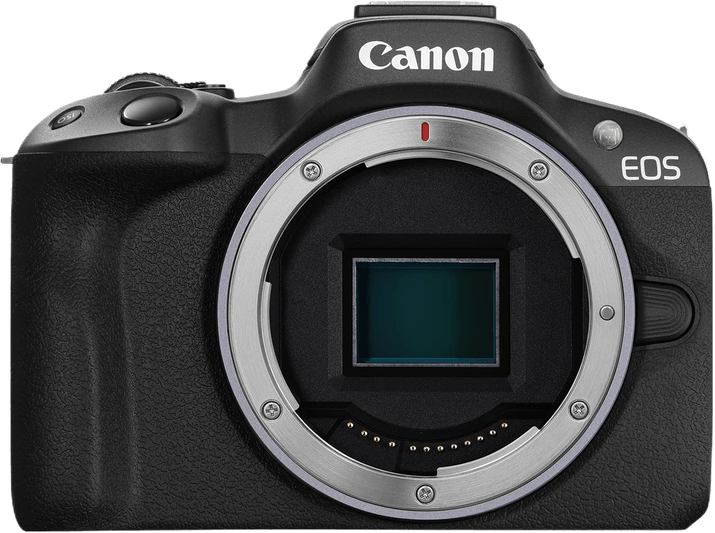
- Lightweight mirrorless body with a 24.2 MP sensor
- 100% coverage with Dual Pixel CMOS autofocus system
- 15 fps burst mode with electronic shutter
- Fully rotating touchscreen for webcam and vlogging
- 4K uncropped video at 30 fps
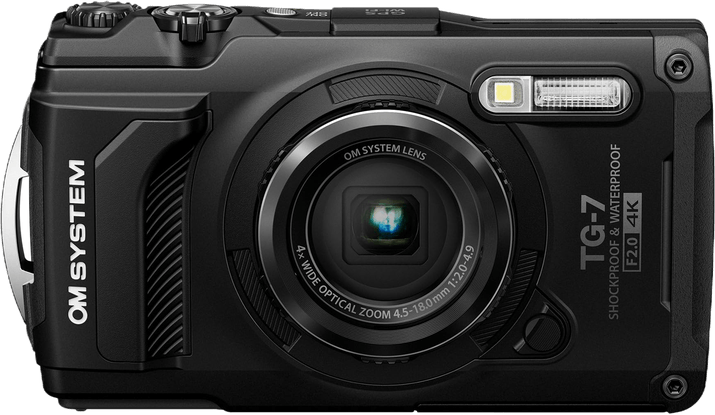
- Rugged, waterproof, dustproof, freezeproof, crushproof
- Fixed f/2.0 lens with 4x zoom range
- Five underwater shooting modes including underwater HDR
- Macro modes with 0.4 inch / 1 cm min focus distance
- 4K video with high-speed frame rates and vertical mode

- Handheld High-Res Shot mode gives you 50 MP images
- 4K Photo mode gives you a 30 fps burst mode
- Expandable ISO range with a low option of 64
- Built-in 5-axis image stabilization
- Unlimited 4K video recording at 30 fps
- Completely weather sealed for outdoor shooting
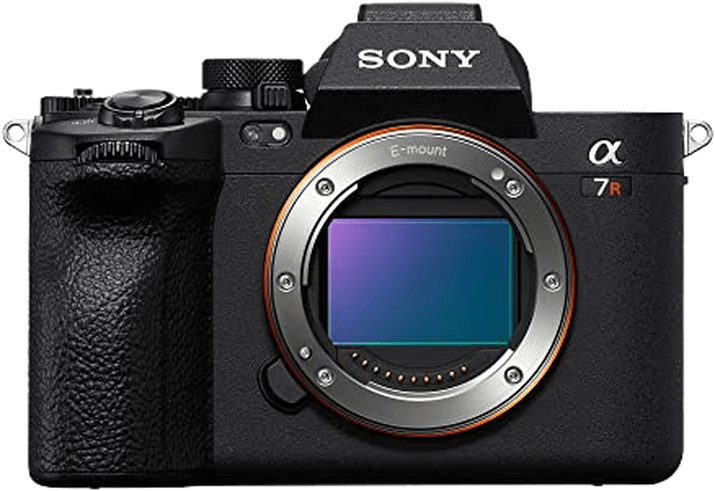
- High-resolution sensor
- Automatic bird or animal eye detection
- Autofocus can track cars, trains, airplanes, and insects
- Big, bright, clear, and sharp electronic viewfinder
- 3.2-inch tilt, flip LCD screen
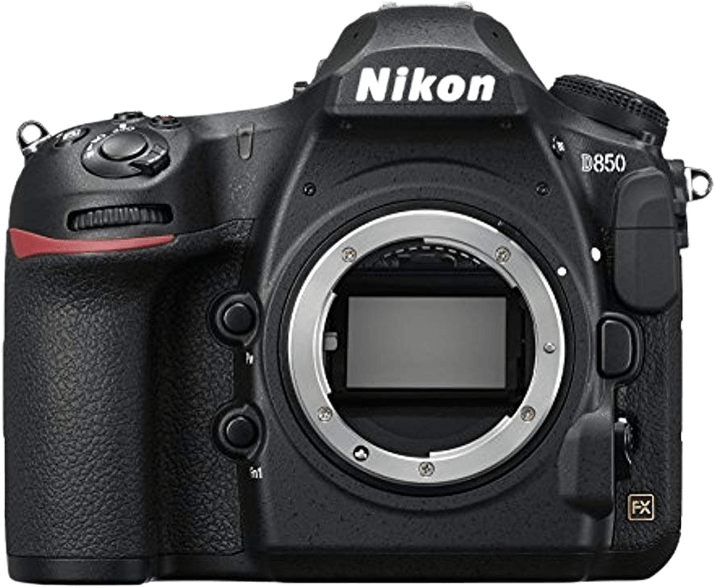
- Fantastic overall image quality
- Excellent 3D continuous AF tracking
- Long, 1,840-shot battery life
- Durable, weather-sealed construction
- Sharp 4K/30p Ultra HD video
7 Best Cameras for Macro Photography
Our carefully curated list includes a wide range of cameras. You’ll find mirrorless and DSLR cameras with different sensor sizes. We even have a compact camera with dedicated macro photography modes.
This list includes the best cameras for macro photography, whether you’re a beginner or a pro.
1. Canon EOS RP

| Brand |
Brand
Canon
|
| Sensor Format |
Sensor Format
|
| Lens Mount |
Lens Mount
Canon RF
|
| Megapixels |
Megapixels
26 MP |
| In-body Stabilization |
In-body Stabilization
|
| Autofocus Points |
Autofocus Points
4,779 |
| Minimum ISO (Native) |
Minimum ISO (Native)
100 |
| Maximum ISO (Native) |
Maximum ISO (Native)
40,000 |
| Frame Rate |
Frame Rate
5 fps |
| Video |
Video
|
| Screen Size |
Screen Size
|
| Other Key Features |
Other Key Features
Subject-tracking autofocus (AF), vari-angle touchscreen, USB charging, environmental sealing
|
| Best For |
Best For
Photographers who want an affordable full-frame camera for macro photography
|
With a sensor that can capture amazing detail and top-of-the-line autofocus, the Canon EOS RP is a great choice for macro photography. Canon’s brilliant full-frame CMOS sensor has a healthy resolution of 26.2 MP.
You’ll see full-frame cameras with higher MP counts. But this Canon camera‘s larger pixel size gives you a wider dynamic range, picking up more detail from the light and dark sections of the image.
The autofocus covers the whole sensor, so you can get the subject’s key details in focus no matter what. The sophisticated Dual Pixel CMOS AF system also tracks moving subjects. This means you don’t have to refocus every time your subject moves.
The fully articulating screen is helpful when shooting at awkward angles. The electronic viewfinder also offers features like magnification. This makes checking focus a breeze, regardless of how you compose your shots.
The R lens mount makes the EOS RP compatible with Canon’s best R Series macro lenses. And if you still have some older EF lenses, you can use the RF-EF lens adapter. This gives you a huge selection of macro lenses to choose from.
The Canon EOS RP is a great camera for many photographers. Its large sensor produces stunning image quality. Its features are practical and intuitive to use. And it’s one of the most affordable full-frame cameras on the market.
2. Nikon Z5

| Brand |
Brand
Nikon
|
| Sensor Format |
Sensor Format
|
| Lens Mount |
Lens Mount
Nikon Z
|
| Megapixels |
Megapixels
24 MP |
| In-body Stabilization |
In-body Stabilization
|
| Autofocus Points |
Autofocus Points
273 |
| Minimum ISO (Native) |
Minimum ISO (Native)
100 |
| Maximum ISO (Native) |
Maximum ISO (Native)
51,200 |
| Frame Rate |
Frame Rate
4.5 fps |
| Video |
Video
|
| Screen Size |
Screen Size
|
| Other Key Features |
Other Key Features
Expanded 50 ISO setting, articulating screen, weather-sealed body
|
| Best For |
Best For
Macro photographers who want a compact, lightweight full-frame camera
|
The Nikon Z5 is one of the most compact and lightweight full-frame cameras. That makes it a great choice for shooting high-quality macro photography from hand.
The full-frame FX-format sensor produces gorgeous images. The 24 MP resolution is modest for a full-frame camera, but the detail is sharp and the colors are rich. The dynamic range is excellent. There’s also an ISO 50 setting to help you maximize image quality.
In-body stabilization gives you more freedom with your exposure controls. It lets you use slower shutter speeds with a reduced risk of motion blur, which is ideal when shooting without a tripod.
A bright 3.2-inch tilting touchscreen helps you compose your shot from any angle. This is very handy when shooting macro from hand and can save you from bending down or craning your neck for long periods. The electronic viewfinder is also excellent, letting you compose your shots the old-fashioned way.
Thanks to its weather-sealed body, you’ll have no issues using the Nikon Z5 outdoors. You’re not confined to a photography studio. You can take the camera out to capture flowers and insects in their natural habitat. It’s also compatible with some excellent Nikon Z macro lenses.
3. Canon EOS R50

| Brand |
Brand
Canon
|
| Sensor Format |
Sensor Format
|
| Lens Mount |
Lens Mount
Canon RF
|
| Megapixels |
Megapixels
24 MP |
| In-body Stabilization |
In-body Stabilization
|
| Autofocus Points |
Autofocus Points
651 |
| Minimum ISO (Native) |
Minimum ISO (Native)
100 |
| Maximum ISO (Native) |
Maximum ISO (Native)
32,000 |
| Frame Rate |
Frame Rate
12 fps |
| Video |
Video
|
| Screen Size |
Screen Size
|
| Other Key Features |
Other Key Features
Expandable ISO range, 15 fps with electronic shutter, vari-angle touchscreen, Wi-Fi connectivity
|
| Best For |
Best For
Beginners buying their first macro camera
|
The Canon EOS R50 is the best macro camera for beginners. It’s a lightweight APS-C mirrorless that’s affordable and easy to use. It’s a great choice for any photographer getting started. And that’s especially true if you’re a fan of macro photography.
A 24.2 MP resolution gives you eye-catching macro images. The color rendition and detail definition are excellent for an entry-level camera. And the low-light performance is also strong, giving you very little digital noise in low-light conditions.
Canon’s Dual Pixel CMOS autofocus system is perfect for macro shooting. It provides 100% coverage to detect the subject anywhere in the frame. And it tracks subjects, keeping them in focus as they move.
The burst rate is 12 fps, which is decent for macro. It’s a fantastic tool for snapping macro shots of small insects and animals. And there’s a faster 15 fps burst if you switch to the electronic shutter.
An articulating screen helps you shoot from any angle. And built-in Wi-Fi connectivity helps you transfer images to other devices. You can share your favorite macro shots on social media in seconds.
The Canon EOS R50 is a versatile entry-level camera. On top of the photography specs we’ve covered, it also offers 4K video recording and webcam functionality. This makes it a great camera for vloggers, live streamers, and content creators. It’s a macro camera that does it all.
4. Olympus OM System Tough TG-7

| Brand |
Brand
Olympus
|
| Sensor Format |
Sensor Format
|
| Lens Mount |
Lens Mount
None
|
| Megapixels |
Megapixels
12 MP |
| In-body Stabilization |
In-body Stabilization
|
| Autofocus Points |
Autofocus Points
25 |
| Minimum ISO (Native) |
Minimum ISO (Native)
100 |
| Maximum ISO (Native) |
Maximum ISO (Native)
12,800 |
| Frame Rate |
Frame Rate
8 fps |
| Video |
Video
|
| Screen Size |
Screen Size
|
| Other Key Features |
Other Key Features
Specialist macro modes, waterproof, dustproof, f/2 fixed lens
|
| Best For |
Best For
Macro shooters who want a rugged, compact camera
|
If you’re an adventurous macro shooter who loves the great outdoors, the OM System Tough TG-7 is the camera for you. It’s small enough to carry in your pocket but can survive almost anything.
It’s completely waterproof. And we don’t just mean water-resistant. You can use the camera underwater at 50 ft (15 m). It has five specialist underwater modes, including an underwater macro mode.
It’s also dustproof, shockproof, and crushproof. And you can use the camera in freezing temperatures, functioning well down to 14 F (-10 C).
A 12 MP resolution is disappointing. While it still beats some smartphone cameras, this level of resolution is falling behind the competition. But the TG-7 still gives you lovely images with vibrant color and detail.
This Olympus camera‘s four dedicated macro modes make it the best compact camera for macro photography. It has a minimum focusing distance of 0.4 inches (1 cm) for extreme close-ups.
The fixed lens offers a limited 4x zoom range, but its constant maximum aperture of f/2 allows plenty of light through. The camera also has a built-in flash.
The 4K video recording makes the TG-7 an excellent action camera. That’s not much use for macro photography. But it’s good to know you can take detailed macro shots and 4K footage with the same camera.
The Olympus OM System Tough TG-7 is perfect for the adventurous macro photographer. Whether you’re climbing a mountain or exploring the Arctic tundra, this is the perfect companion. It lets you capture stunning macro images in any environment, anywhere in the world.
5. Olympus OM System OM-5

| Brand |
Brand
Olympus
|
| Sensor Format |
Sensor Format
|
| Lens Mount |
Lens Mount
Micro 4/3
|
| Megapixels |
Megapixels
20 MP |
| In-body Stabilization |
In-body Stabilization
|
| Autofocus Points |
Autofocus Points
121 |
| Minimum ISO (Native) |
Minimum ISO (Native)
200 |
| Maximum ISO (Native) |
Maximum ISO (Native)
25,600 |
| Frame Rate |
Frame Rate
30 fps |
| Video |
Video
|
| Screen Size |
Screen Size
|
| Other Key Features |
Other Key Features
High-Res Shot mode, focus stacking, HDR mode, weather-sealed body
|
| Best For |
Best For
Macro photographers who want a feature-packed camera
|
As a Micro Four Thirds camera, the OM System OM-5 is compact for an interchangeable lens camera. But rather than its smaller sensor being a compromise, it gives you the best of both worlds. You have a compact, lightweight camera body packed with advanced features!
The native resolution is 20 MP, which isn’t bad at all. But the OM-5 has a trick up its sleeve with its High-Res Shot mode. By combining several exposures, it gives you a 50 MP composite. It’s the best way to get high-resolution macro images. And you don’t need a tripod!
High Dynamic Range (HDR) mode is another feature that enhances your macro images. It works similarly to the High-Res Shot mode, using several exposures to create one image. The best part is that it creates the HDR image in-camera. So you don’t need photo editing software.
Focus stacking is also handy when shooting macro. Five-axis image stabilization lets you shoot handheld without a tripod and gives you more exposure control, even in low light.
This OM System camera offers excellent AF accuracy by using a cross-quad pixel AF with 1053 focus points. It also provides nearly full-frame coverage and easily tracks fast-moving subjects.
The rugged weather-sealed body lets you work outdoors in tough conditions. It’s dustproof for dry, desert-like conditions. And you can even use it in temperatures as low as 14 F (-10 C).
It’s easy to see why many macro photographers shoot with the Olympus OM System OM-5. And we haven’t even mentioned the incredible 4K video features. It’s an impressively versatile camera and one of the best for macro photography.
6. Sony a7R V

| Brand |
Brand
Sony
|
| Sensor Format |
Sensor Format
|
| Lens Mount |
Lens Mount
Sony FE
|
| Megapixels |
Megapixels
61 MP |
| In-body Stabilization |
In-body Stabilization
|
| Autofocus Points |
Autofocus Points
693 |
| Minimum ISO (Native) |
Minimum ISO (Native)
100 |
| Maximum ISO (Native) |
Maximum ISO (Native)
32,000 |
| Frame Rate |
Frame Rate
10 fps |
| Video |
Video
|
| Screen Size |
Screen Size
|
| Other Key Features |
Other Key Features
AI processing unit and AF, selectable RAW image sizes, anti-dust system, vari-angle touchscreen, dual card slots
|
| Best For |
Best For
Macro photographers who need very high-resolution images
|
The Sony a7R V is your camera if you need high-resolution macro images. It’s a pro-level camera that isn’t cheap, but with a 61 MP resolution and an advanced AI processor, you get what you pay for. It’s a truly incredible machine.
The standard 61 MP images are breathtaking. But the RAW file size is huge, and your memory card will fill up fast. Thankfully, you don’t always have to shoot at 61 MP. You can also shoot at 26 or 15 MP to help save space. The picture quality is still excellent on both.
The dual card slots also let you shoot more photos without running out of memory. Both slots support CFexpess Type A and UHS-I and UHS-II SDXC/SDHC memory cards.
A powerful image stabilization system provides eight stops of compensation. It allows for perfect low-light exposure and better handheld shots.
A 10-fps burst rate isn’t the fastest on the market. But remember, it’s capturing 61 MP images at 10 frames per second, which is very impressive. And you get full AF coverage at that speed, so it tracks while shooting in burst mode. A 10-fps burst is also fast enough for macro photography.
Practical features like the vari-angle touchscreen make the a7R V a pleasure to shoot. The anti-dust system helps keep the camera sensor clean, maximizing camera durability and image quality.
Expanding the ISO range is another way to achieve the best picture quality possible. This Sony mirrorless camera has a minimum ISO setting of 50. This helps you get even more out of the high-res sensor. It also expands to 102,800, giving you noise-free images even at the top end.
The a7R V is the best professional Sony camera for macro photography. But it isn’t limited only to macro. You can use this camera for pretty much any type of professional photography. The camera’s 8K video recording also makes it great for videography. The a7R V does well to justify its price.
7. Nikon D850

| Brand |
Brand
Nikon
|
| Sensor Format |
Sensor Format
|
| Lens Mount |
Lens Mount
Nikon F FX
|
| Megapixels |
Megapixels
45.7 MP |
| In-body Stabilization |
In-body Stabilization
|
| Autofocus Points |
Autofocus Points
153 |
| Minimum ISO (Native) |
Minimum ISO (Native)
64 |
| Maximum ISO (Native) |
Maximum ISO (Native)
25,600 |
| Frame Rate |
Frame Rate
7 fps |
| Video |
Video
|
| Screen Size |
Screen Size
|
| Other Key Features |
Other Key Features
Focus stacking, tilting LCD screen, Wi-Fi connectivity, weather-sealed body
|
| Best For |
Best For
Traditional macro photographers looking for a powerful and reliable DSLR
|
DSLRs may have lost popularity, but the D850 is still one of the best cameras for macro photography. It’s hefty and lacks more advanced features. But the full-frame sensor produces stunning 46 MP images. It’s perfect for macro photography purists.
The native ISO range gives you a low setting of 64 ISO. But you can also expand the range to unlock a 32 ISO setting, giving you even better image quality. The detail and colors are truly something to behold. And you get a wide dynamic range at most ISO settings.
Many photographers prefer to compose shots using this camera’s old-school pentaprism optical viewfinder. But you can also review each shot using the tilting LCD touchscreen.
With 153 focus points and 99 cross-type sensor points, the D850 has one of any DSLR’s most advanced AF systems. It doesn’t quite match some of the more modern mirrorless systems, but it does a great job for macro. It’s quick to lock focus, and the tracking is reliable and accurate.
A 9-fps burst is fast enough for most macro photographers. And that’s at full resolution with autofocus support, so any moving subject stays in focus.
Exceptional battery life lets you shoot for hours on end. While a mirrorless camera might give you 300 to 400 shots if you’re lucky, a fully charged battery for the D850 can take up to 1840 shots.
The Nikon D850 has excellent video features as well. You have uncropped 4K recording. And there’s a built-in 8K time-lapse video mode. That’s not much use in macro, but it adds to the versatility of this incredible DSLR camera.
Macro Photography Gear FAQs
After finding the best camera for macro photography, it’s time to add specialized gear to your camera bag. We’ll help you get started so you don’t waste money on bad or unnecessary products.
What Is the Best Lens for Macro Photography?
All the best lens manufacturers make specialist macro lenses. These lenses give you a magnification level of 1:1, meaning the subject’s reproduction on the sensor is the actual size. We feature all the top lens brands in our in-depth article on the best lenses for macro photography.
Macro lenses are always prime lenses. You find them to be on the professional side and have a telephoto focal length, usually somewhere around 100mm. But you can also get standard-angle prime lenses with macro magnification.
The best macro lens for Canon mirrorless users is the Canon RF 100mm f/2.8L Macro IS USM. It offers sharp optical quality, a fast max aperture, a superior AF motor, and built-in image stabilization.
The Canon RF 35mm f/1.8 IS Macro STM is a great affordable option. It offers true macro magnification and is perfect for beginners trying macro photography. We recommend the EF 100mm f/2.8L IS USM if you use a Canon DSLR.
Our full article lists all the best Canon lenses for macro photography.
If you’re using a Nikon mirrorless camera like the Z5, we suggest buying the Nikon Nikkor Z MC 105mm f/2.8 VR S. This lens is from Nikon’s superior S line, so the optical quality is sensational. It also has a fast max aperture and a vibration reduction system.
Check out our best Nikon macro lenses article for more options.
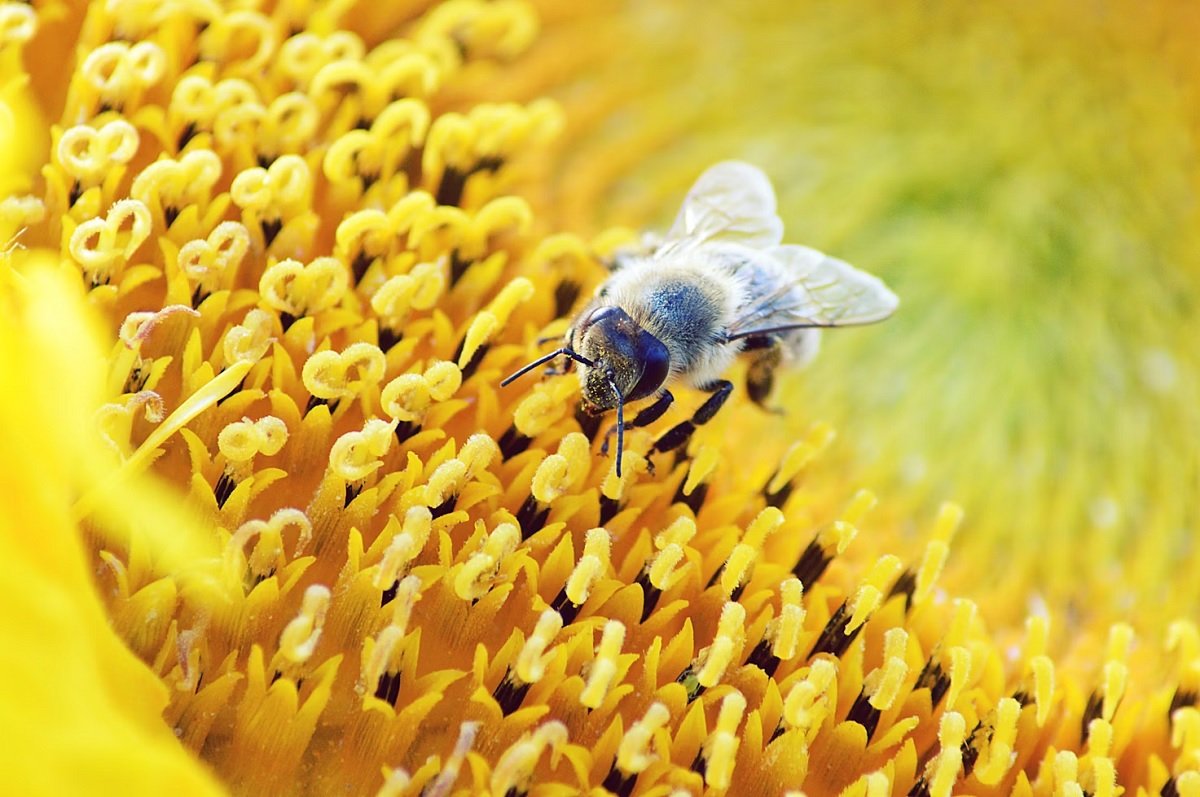
What Is the Best Tripod for Macro Photography?
Tripods are great tools for macro photography. They provide a stable platform for working and give you more freedom with your exposure settings.
A tripod lets you use slower shutter speeds, removing the risk of camera shake. This helps you get the light you need for perfectly exposed macro shots in any lighting conditions. The added stability also helps you use features like High-Res Shot or HDR modes.
We recommend the Vanguard Alta Pro 263AB 100 as the best macro tripod. Its excellent build quality allows for a load capacity of 15.4 lbs (7 kg)—strong enough for all the cameras on our list. A removable central column allows for horizontal mounting. And it has a versatile ball head.
You can browse all the best tripods for macro photography here.
What Is the Best Flash for Macro Photography?
The Godox MF-R76 Macro LED Ring Flash Speedlite is our top macro ring flash. Thanks to the eight adapters, it’s compatible with any macro lens. Its adjustable power settings give you more lighting control. And the dual-tube system helps you balance light in uneven scenes.
A ring flash is the best type of flash for macro photography. It attaches to the end of your lens, illuminating your subject when it is close to the front element. Due to its round shape, it illuminates evenly from all angles for consistent lighting.
See all the best ring flashes in our full article if you want more options.
The Best Macro Photography Gear and Resources
We’ve only touched on some of the equipment you need for macro photography. There are extension tubes, focus rails, and reflectors, to name a few. But that’s a whole new subject and too complicated to explain here. We do have an article that gives you a full explanation of macro gear.
If you want some inspiration, you can also read our appreciation post for the best macro photographers.
Conclusion: Best Camera for Macro Photography
All the cameras in our article are excellent choices for macro photographers. They deliver stunning images, offering sharp details, rich colors, and wide dynamic ranges. They have extra features macro shooters love, like focus stacking and high-res modes.
We’ve also seen cameras for photographers of all kinds. There are macro cameras for beginners and intermediates. We’ve seen high-resolution cameras for professional macro photographers. And we have cameras with unique macro photography features.
The EOS RP is our top camera for macro photography. Its full-frame sensor produces vibrant images with a wide dynamic range. Its super-reliable AF system and practical features make it a joy to use and own. Plus, it’s compatible with some of Canon’s best macro lenses.
